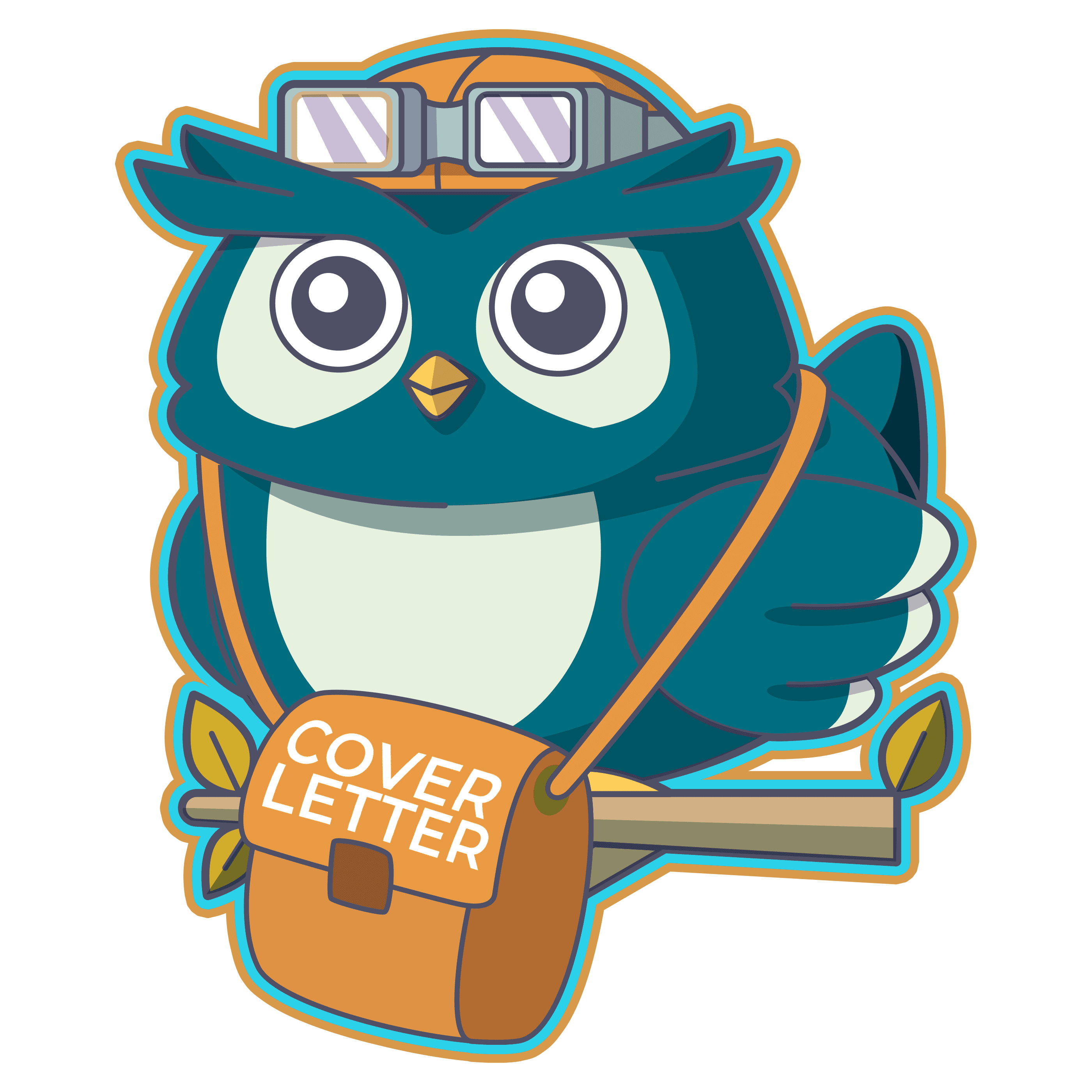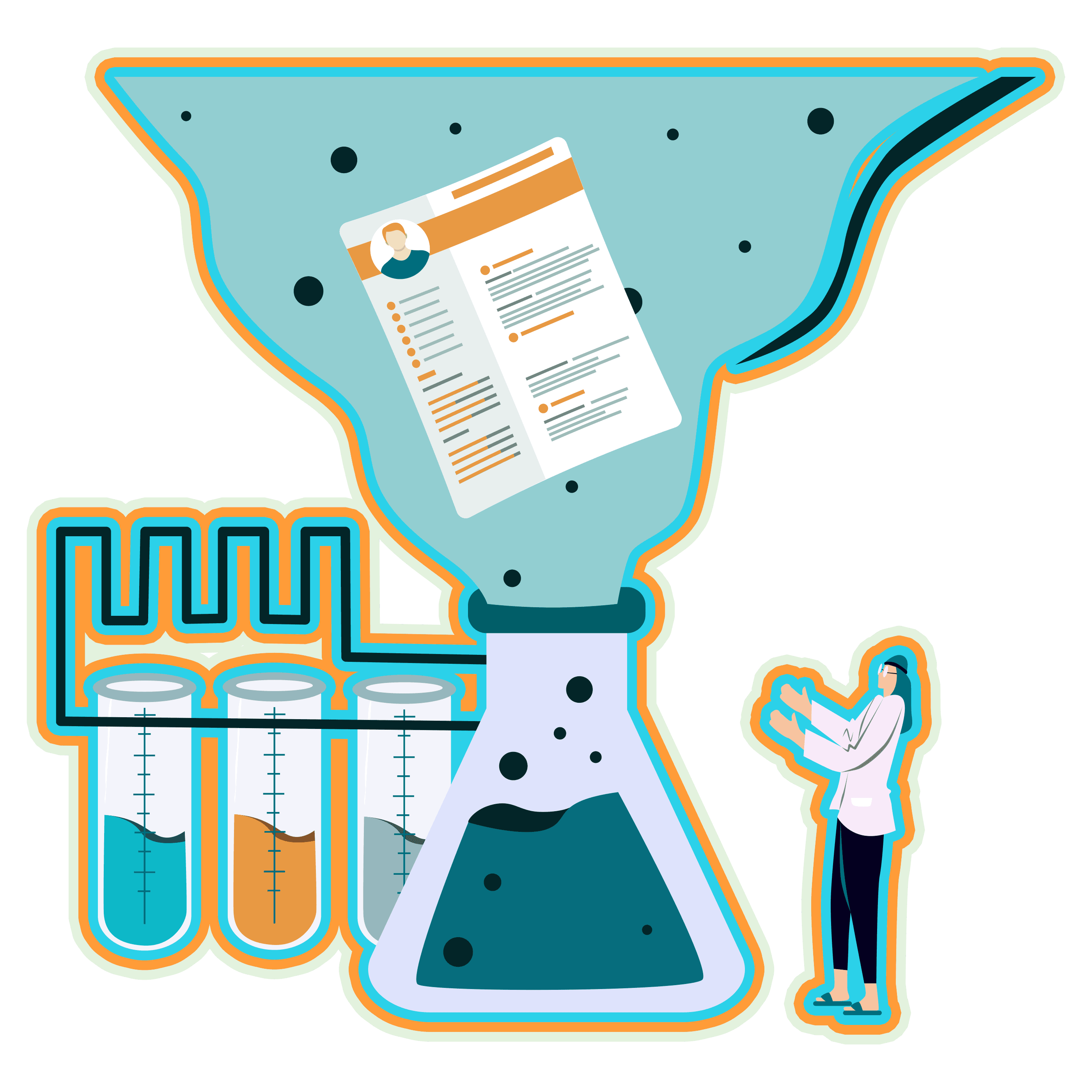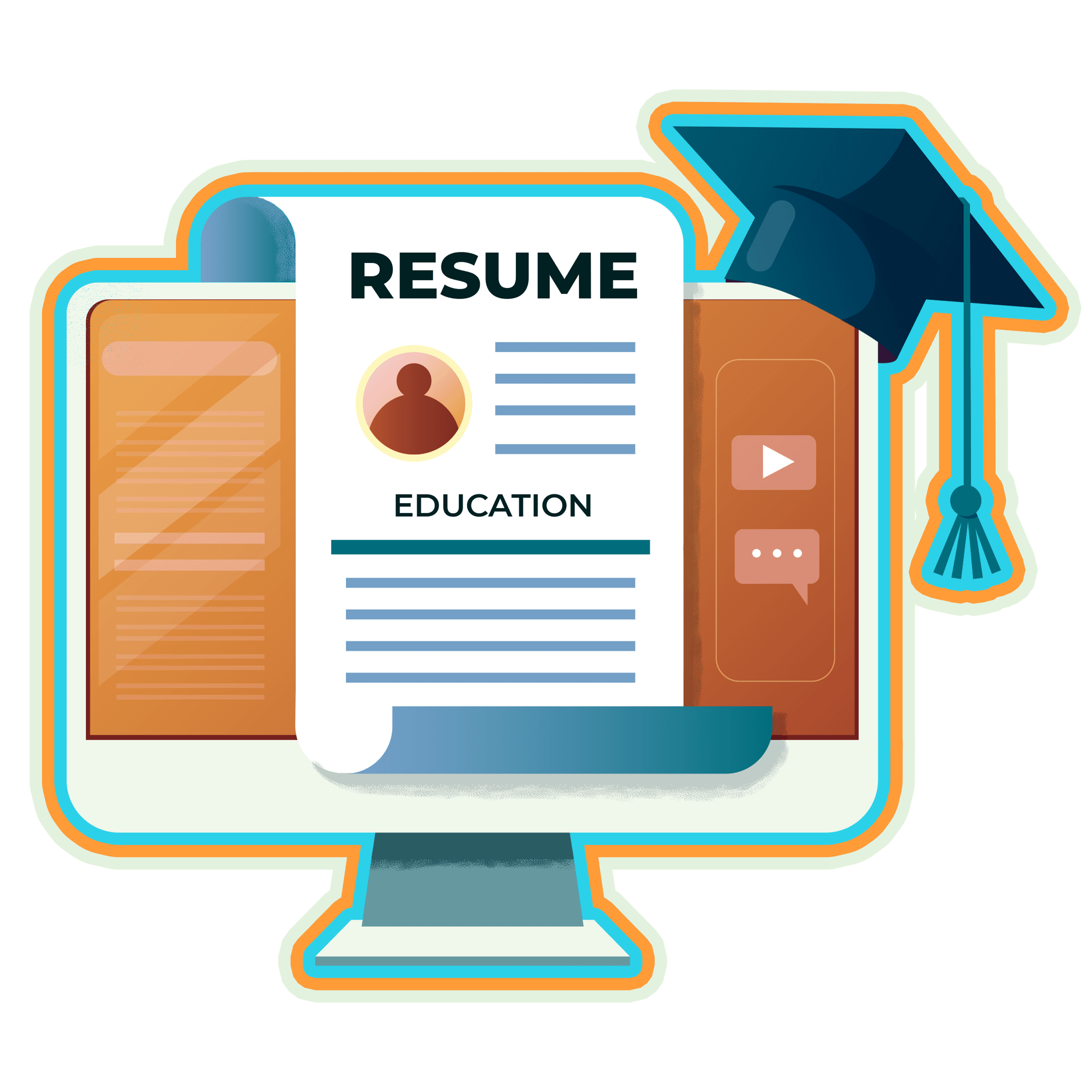Table of Contents
A cover letter is a one-page document accompanying a resume when applying for a job. To format a cover letter, it is essential to create a clear structure, including an opening salutation, an introduction, body paragraphs, and a closing. A cover letter must typically have 3-4 paragraphs. The header must include the sender’s contact information, the date, and the recipient’s contact information. The salutation must address the hiring manager by name if have one.
The opening paragraph must grab the reader’s attention and state the letter's purpose. The middle paragraph(s) must highlight the sender’s relevant experience and qualifications. The closing paragraph must restate the sender’s interest in the position and include a call to action. The correct spacing for a cover letter is single-spaced. The standard margins for a cover letter are one-inch margins on all sides. The ideal length of an effective cover letter is one page or less and must be between 250-400 words or three to four concise paragraphs. It is recommended to use a simple and professional font such as Times New Roman, Arial, Calibri, or Verdana for a cover letter.
The main file formats for cover letters are Docx and PDF. It is recommended to save the cover letter in a PDF format because it is more universal and is opened on any device without formatting issues. Designing a cover letter involves choosing a format and layout that best showcases the applicant’s qualifications and interest in the position. Several styles of cover letters are used to make an application stand out, including block format, T-shaped, simple, and modern. Each style has its unique design elements and formatting.
Cover letters come in different formats depending on the industry and purpose. There are also specific formats for different industries and purposes, such as academic, federal, business, and education. Formats follow specific cover letter guidelines and include information relevant to the industry or purpose. A cover letter must be well-formatted, concise, and tailored to the particular job and industry. The letter must highlight the sender’s relevant experience and qualifications and make a strong case for why they are the best candidates.
How to Format Cover Letter
To format a cover letter, it is essential to create a clear structure, including an opening salutation, an introduction, body paragraphs, and a closing. The letter must have a header with the date and contact information, a salutation or greeting, an opening paragraph, one or two middle paragraphs, a closing paragraph, a letter ending, and a signature.
A good cover letter formatting makes a great first impression on potential employers. Starting with an opening salutation that addresses the hiring manager by name is recommended. The introduction must briefly introduce the applicant and explain their interest in the position. The body paragraphs must highlight relevant skills and experiences and explain how they make the applicant a good fit. Finally, closing the letter by thanking the hiring manager for their time and consideration is advised. The font must be simple and professional, 10 to 12 points in size. The letter must be one page long and use the correct margins, alignment, and spacing. A subject line with the sender’s name and the position being applied for must also be included if the cover letter is being sent as an email.
How Many Paragraphs must A Cover Letter Have
A cover letter must typically have 3-4 paragraphs. A well-written cover letter must be concise and to the point while still providing enough information to make a strong case for the applicant. The first paragraph must serve as an introduction, briefly introducing the applicant and explaining their interest in the position. The second and third paragraphs highlight relevant skills and experiences and explain how they make the applicant a good fit. Finally, the last section must serve as a closing, thanking the hiring manager for their time and consideration and expressing enthusiasm for the opportunity.
The structure of a cover letter is a header, greeting/salutation, opening paragraph, middle paragraph, and closing paragraph.
Header
The header of a cover letter is the minor section of the document and is located at the top of a cover letter. The header usually includes the sender’s contact information and makes it easy for the hiring manager to contact them. A well-designed cover letter outlines enhance an application and makes the candidate more memorable. The cover letter header must include the full name, home city and state, phone number, email address, LinkedIn profile (if available), and other relevant links such as a portfolio or social media links (if applicable).
Greeting/ Salutation
The greeting or salutation of a cover letter is used at the start of a cover letter and included with a resume when applying for a job. The greeting must be formal and respectful, using the proper title and name of the hiring manager, if known. The professional salutation for a cover letter is “Dear,” followed by the hiring manager’s name and a colon or comma. The salutation sets the tone for the rest of the cover letter and job application. The greeting or salutation of a cover letter is like introducing oneself to the recruiter by reading the cover letter.
Opening Paragraph
The opening paragraph of a cover letter is the first sentence and paragraph a hiring manager reads. The opening paragraph must include information about the applicant, how the job was found, why the applicant is applying, and why they are a good fit. The first paragraph must be concise, clean, exciting, and relevant to the job. The opening paragraph is an introduction and provides immediate and focused information about the applicant’s connection to the company.
Middle Paragraph
The middle paragraphs of a cover letter must discuss the most relevant experience, highlighting specific qualifications and skills that make the applicant the perfect candidate. The middle section must not just restate what’s already on the resume but provide additional detail and context for the experience. The middle paragraph is between 1-3 paragraphs depending on the amount of experience, but the letter must fit onto one page.
Closing paragraph
The closing paragraph of a cover letter is the last thing the employer reads and the final opportunity to make a good impression. Closing paragraphs must summarize the major points from the cover letter, highlight why the applicant is the best candidate, and suggest an interview. The last section must also thank the employer for considering the applicant and use a polite and professional closing salutation. The tone and style of the closing paragraph must match the rest of the cover letter.
What Is The Correct Spacing For A Cover Letter
The correct spacing for a cover letter is single-spaced. Additional space must be left between the greeting and the opening paragraph. Some experts suggest adjusting line spacing to fit the page. It is also recommended to use standard one-inch margins when formatting a cover letter and align all paragraphs along the left side of the page.
What Are The Standard Margins For A Cover Letter
The standard margins for a cover letter are one-inch margins on all sides. One-inch margins on all sides means that there must be a one-inch margin at the top, bottom, left, and right sides of the page. Using standard margins helps to ensure that the cover letter parts are easily readable and look professional.
What Is The Ideal Length Of An Effective Cover Letter?
The ideal length of an effective cover letter is one page or less and must be between 250-400 words or three to four concise paragraphs. Cover letters must be brief and concise while providing enough information to showcase the applicant’s qualifications and interest in the position. The cover letter must be single-spaced with an additional space between the greeting and the opening paragraph.
What Font Should You Use For A Cover Letter?
It is recommended to use a simple and professional font such as Times New Roman, Arial, Calibri, or Verdana for a cover letter. 10-12 points is the ideal font size to ensure the text is easily readable. A simple and professional font helps ensure the cover letter looks clean and polished.
The right font makes reading and focusing on the letter's content easier for the hiring manager. It is recommended to refrain from using fancy or decorative fonts in a cover letter. Many employers use applicant tracking systems to sort job applications based on specific keywords, skills, job titles, or other fields. Using complicated fonts makes reading the letter difficult for the software and prevents the application from being considered.
File Format
The main file formats for cover letters are Docx and PDF. PDF is often considered more convenient than Docx because it preserves the document's formatting and ensures it appears the same on any device or operating system.
The recipient easily views a cover letter without requiring a specific word processing program installed on their computer when a cover letter is saved as a PDF. PDF files are more universal and are opened on any device without formatting issues. PDF ensures that the hiring manager sees the cover letter strictly as it was intended to be seen, without any changes in formatting or layout.
How To Design A Cover Letter
Designing a cover letter involves choosing a format and layout that best showcases the applicant’s qualifications and interest in the position. Four different forms and styles are used when designing a cover letter.
- Block Format Cover Letter
- T-Shaped Cover Letter
- Simple Cover Letter
- Modern Cover Letter
Each format has unique features and is used to create a visually appealing and effective cover letter. Which design is best for a particular application depends on their circumstances and the job requirements they are applying for.
Block Format Cover Letter
A block format cover letter is the most traditional and widely used style. It is single-spaced with an additional space between each section and left-aligned with standard one-inch margins. Below are the steps to write a letter in block format.
- Start with contact information. Contact information must include the sender’s name, address, phone number, and email address.
- Add the date. The date must be two lines below the contact information.
- Write the recipient’s contact information. Contact information must include the name of the person being written to, their title, and the company they work for.
- Salute the recipient. A colon, not a comma, must follow the salutation.
- Write the body of the letter. The body of the letter must be single-spaced, with a double space between paragraphs.
- Close the letter. A signature must follow the closing.
- Add name. Include a typed name below the signature.
T-Shaped Cover Letter
A T-shaped cover letter is a style of professional letter that compares the requirements listed in a job posting to the sender’s professional qualifications. The T-shaped cover letter gets its name from how it appears on paper or the screen, with a T-chart setup that divides the page into two columns with a vertical line. The following are the steps on how to write a T-shaped cover letter.
- Start by identifying the job requirements. Job requirements information is found in the job posting or by speaking with a recruiter.
- List the job requirements in the left column of the T. Be sure to include hard skills (such as proficiency in specific software programs) and soft skills (such as communication and teamwork).
- List skills and experience that match the job requirements in the right column of the T. Be sure to provide specific examples of skills and expertise used in previous roles.
- Write a brief introduction. Explain why the job is exciting and why the sender is a good fit for the company.
- Close the letter. Finish with a call to action, such as asking to schedule an interview.
Simple Cover Letter
A simple cover letter is a minimalist approach focusing on the content rather than the design. It uses a basic font and formatting to present information clearly and concisely. Below are the steps to write a letter in a simple format.
- Start with the header and greeting: Begin with contact information, followed by the date and the employer’s contact information. Use an official salutation such as “Dear [Hiring Manager's Name].”
- State interest in the position: Mention the job title listed in the job description and state interest in the position. Mention years of industry/job experience.
- Highlight relevant experience and qualifications: Include relevant experience and qualifications without repeating what’s in the resume. Highlight one to two relevant achievements with facts and data when feasible.
Modern Cover Letter
A modern cover letter is a one-page document that outlines why the sender would be a good fit for a job opening. The modern cover letter is written clearly and concisely and uses modern design elements to make it visually appealing. The following are the steps on how to write a modern cover letter.
- Start with a strong introduction. The first paragraph of the cover letter must introduce the sender to the employer and state their interest in the position. The first paragraph must mention how the job opening was found.
- Highlight skills and experience. The second paragraph of the cover letter must highlight skills and knowledge relevant to the job being applied for. The second paragraph must highlight any relevant accomplishments or awards that have been received.
- Explain why the sender is a good fit for the company. The third paragraph of the cover letter must explain why the sender is a good fit for the company and why they would be a valuable addition to the team. The third paragraph must mention why working for the company is of interest.
- End with a call to action. The last paragraph of the cover letter must thank the employer for their time and consideration and invite them to contact the sender if they have any questions.
Cover Letter Format Examples
Cover letters come in different formats depending on the industry and purpose.
Academic Cover Letter Format

Federal Cover Letter Format

Business Format Cover Letter

Education Cover Letter Format

Conclusion
A cover letter is an important part of a job application that allows the applicant to showcase their skills and experience in a personalized manner. The cover letter must be well-formatted, concise, and tailored to the job and industry. By following the formatting, spacing, margins, length, font, and file format guidelines and choosing an appropriate style and design for the enterprise or purpose, an applicant creates a solid and compelling cover letter to make their application stand out. A well-written cover letter increases the chances of being invited for an interview and landing the job.




